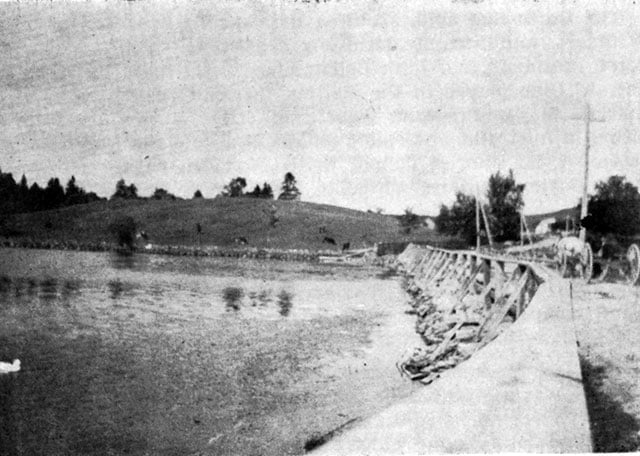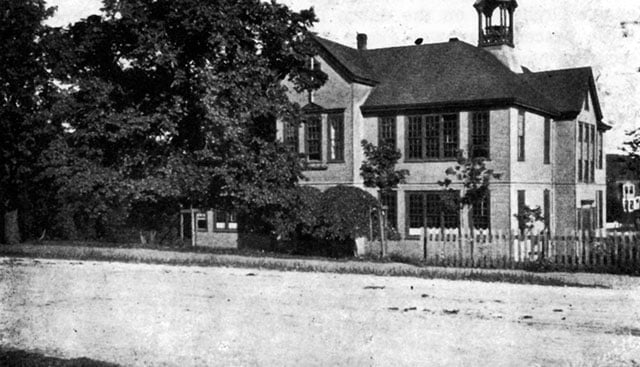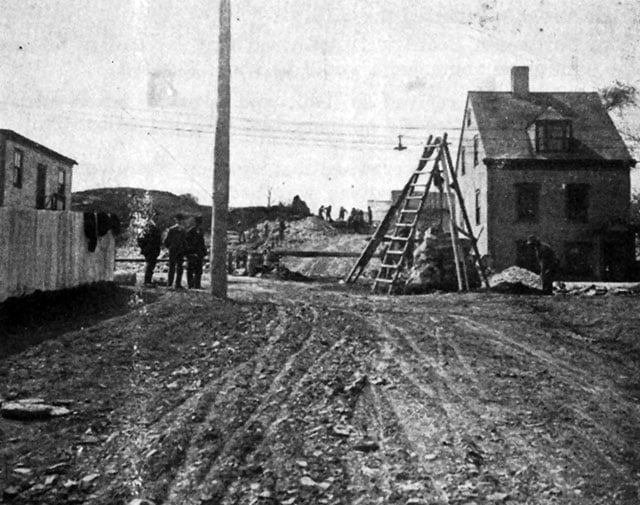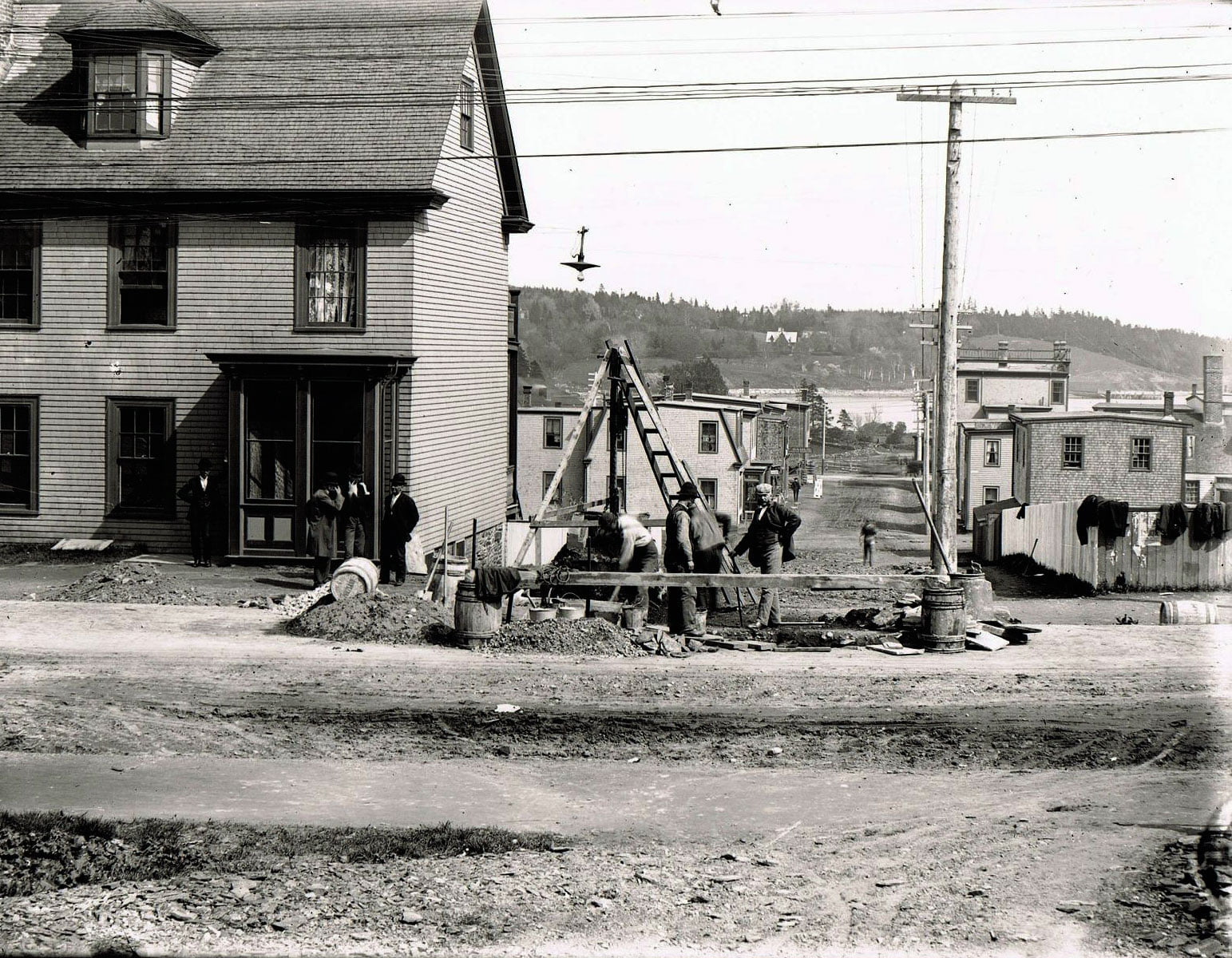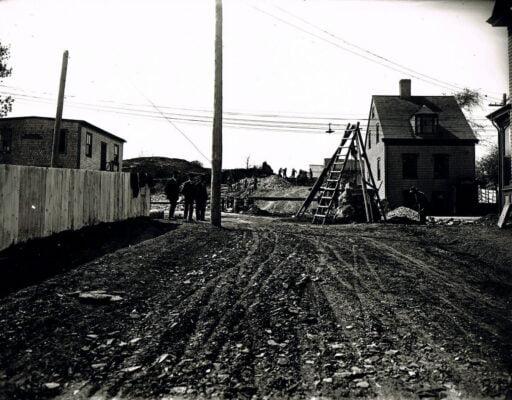From The Story of Dartmouth, by John P. Martin:
In the winter of 1906 Ropework employees marched in a body to attend the funeral of Hon. William J. Stairs at Halifax. Mr. Stairs was the founder of their establishment, and the man whose spirit of enterprise and purpose was largely responsible for developing the northend of Dartmouth. Prior to the coming of Ropework families after 1868, there were vast areas of woods and pasture in that section of town paying only a few dollars taxes. Mr. Stairs also lived on our side of the harbor for several summers. At a cost of £600 in 1854 he bought “Fernwood Cottage” at South Woodside from John P. Mott who had been his schoolmate at Horton Academy. It is said that H. Y. Mott had Henry Watt build “Fernwood” for his son before the latter’s wedding in 1848. Besides his Ropeworks investments, Mr. Stairs owned stock in the Starr Mfg. Co., and later became its Vice-President.
In 1906 the Town acquired its own horses and erected stables in the workshop yard. This provided faster service for night-alarms, Hitherto a driver ran from his home to Warner’s stables near the ferry. Then he harnessed and galloped his horses to the Engine House. So many fires of a suspicious nature broke out in 1906 that special night watchmen were engaged. The “Joe Howe house” burned down in May. Shrum’s pond, at the southwest corner of Wyse Road and Dawson Street, was pumped dry in an effort to beat the blaze. Eugene Nichols succeeded Officer Trider on the Police force. (Mr. Nichols had been with the Water Dep’t.)
Another advance in north-end water extension was made in 1906 when pipes were laid up Windmill Road as far as Lyle Street, and also along the length of Fairbanks Street. To provide for this service, an additional 16-inch main was laid from upper Canal Bridge to meet the 20-inch main on York’s Hill. In that year, Lake Loon was purchased for $4,000 from Colin McNab.
About the same time, Town Councillors got tangled in a costly lawsuit over a public sewer which drained into Rolling Mill property at the foot of Wentworth Street. As the Town lost the case, the sewer had to be diverted from the Canal stream, and extended angularly through private backyards to King Street whence it ran dewn to the harbor at the western extremity of Marine Street. (It now flows into Mill Cove at the foot of the hill.)
Our Natal Day was celebrated on August 9th, and for the first time in history, Halifax declared a civic half-holiday. A program of sports for school boys was held on the Common in the morning. At the Regatta the North Stars won the senior 4-oared shell race, and repeated the performance at three more regattas that summer on salt water. At the end of the season, however, the Stars were defeated for the Maritime Championship by the North West Arm Rowing Club. In the latter crew were James and Amos Turner, two young men from South Woodside.
In September, the Telephone Company removed from King Street to the brick building, formerly Wambolt’s fish-market where they installed modern equipment. To communicate with “Central” we no longer cranked the bell-box, but simply took down the receiver. The first lady all-night operator in this building was Miss Mary Lahey who is now Mrs. Arthur Hare. (The first telephone operator in Dartmouth when the office opened on Edward Street was the late Mrs. John Short, then Miss Minnie Young.)
The present ferry waiting-room, built by Thomas Merson, and equipped with turnstiles and newsstand was opened in the autumn. The “Dartmouth Patriot” plant was now located in John Power’s former carriage factory at 85 Portland Street. The vacant Sunday School building of Christ Church was donated to the [black] congregation, and transferred on rollers to its present location where it stands as Victoria Road Baptist Church. William Patterson of Prince Street, purchased “The Grove” property, and offered building lots at about $70 each. By this time, a thoroughfare extended easterly to Portland Street.
In November of that year the price of milk went up to seven cents a quart, owing to a rise in the price of feed. Food for human consumption evidently was not affected, for the Handley House continued to serve the 3-course midday meal at 25 cents.
At 113 Ochterloney Street died Miss Margaret Robertson in her 103rd year. Her ancestors had settled at Robertson’s Brook, Cole Harbor. Ex-Mayor Scarfe suffered painful injuries in a carriage accident, and survived only a few weeks. Postmaster J. B. Maclean died in July, and was succeeded in office by his son Burns Maclean. Another landmark disappeared with the passing of Saul Bauld, last of the old-time water-carriers.

This is the new ferry waiting-room built in 1906, which replaced the old waiting-room. The practice in the latter building was for passengers to enter and wait for the boat, then emerge through the same door in order that they might pass through the gates. The new building was equipped almost the same as it is nowadays. Note the covered buggy of a cabman or two at the left of the photo, also that vehicular traffic keeps to the left. In dry weather, clouds of dust filled these streets. The drinking-fountain is shown at right, just above the figures of the voluminously-dressed ladies hurrying to get through the turnstiled waiting-room and on board the boat. The pitch-roofed structure is the ferry freight-shed. Small parcels were then freighted back and forth at a low cost. John Hiltz was freight agent for a time. So was James Devan.
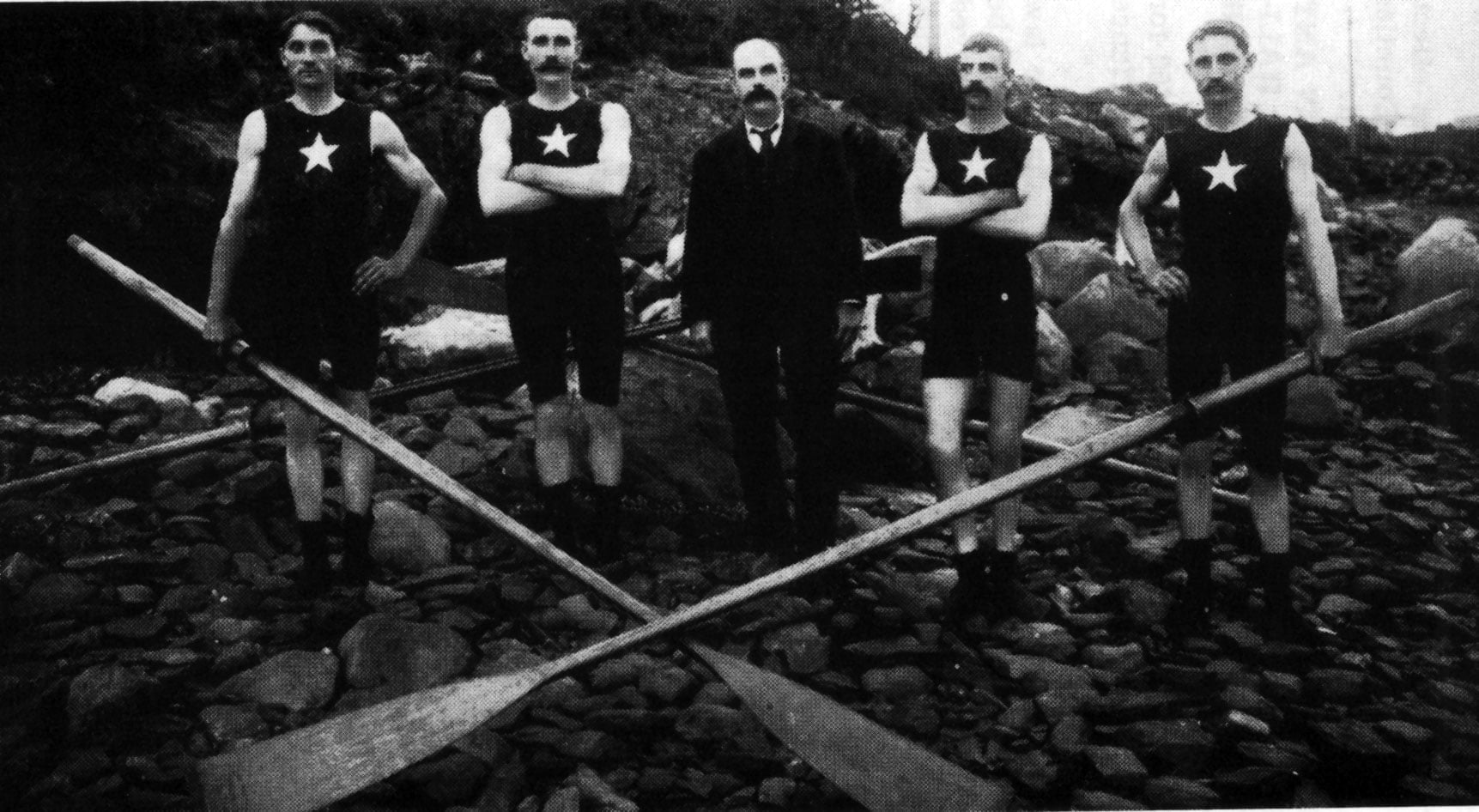
This photo taken outside the North Star boathouse a short distance north of the harbor bridge, shows the senior crew of the North Star Club. The date is somewhere between 1905 and 1907. Left to right are Owen Sawler, Albert Sawler, Robert Gray (trainer), William Chapman, Percy Sawler. In mid-1907 Chapman was replaced by Walter Nelson, and he rowed with the crew until the Sawlers retired at the end of the 1908 season. The trainer was then William Tobin. The mark of nine minutes made by the North Stars in 1908 remained unbroken for 16 years.



